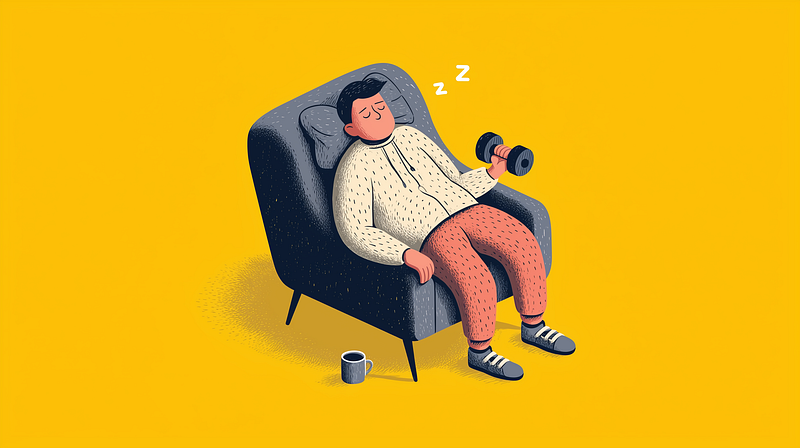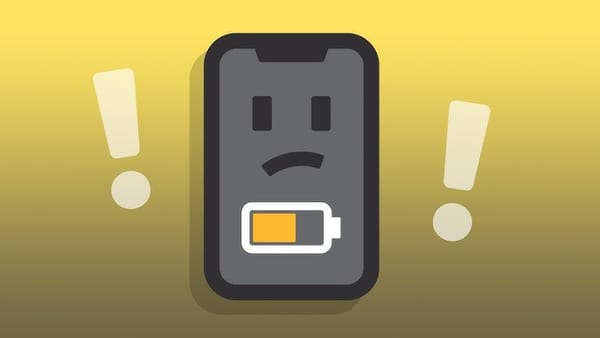Why Laziness Might Be the Ultimate Health Hack
How doing less might actually be the best way to get in shape.

How doing less might actually be the best way to get in shape.
Here’s an unpopular opinion that might just be true than most people are ready to admit: laziness isn’t the downfall of health; it’s in many ways the blueprint.
We’ve been sold this lie that the only way to get healthy is through relentless effort, early mornings, complicated workouts, and obsessive food tracking.
But in reality? The ones who are actually succeeding long-term are doing it by setting up systems that require the least amount of daily resistance.
They’re not grinding. They’re gliding.
Being healthy, in practice, often comes down to how well you can make it effortless.
And what is laziness, if not the relentless pursuit of doing things with as little effort as possible?
Let’s break it down by the three F’s of health: Fitness, Food, and Fulfillment, and how each one proves that laziness might be the most lucrative strategy you’ve been trying to avoid.
Fitness: Simplify or Quit Trying
Let’s start where most people burn out first: working out.
The average person thinks you need to approach fitness like a boot camp. Five-day splits, HIIT routines, 90-minute sessions, tracking every rep and rest period. It sounds hardcore, but really, it’s just a fast track to burnout.
Because here’s the truth: complexity is the enemy of consistency.
If you want to keep showing up day after day, the secret isn’t more intensity, it’s less resistance. Strip the workout down. Full-body movements. Three exercises. Thirty minutes is the goal. Done and dusted.
That’s not a “lazy” plan: That’s a repeatable one.
Cardio? Same thing. The best runners in the world don’t sprint every day; they jog. Most of their training is easy.
Why? Because it keeps them healthy, builds endurance, and more importantly, it’s not such a beating that they dread doing it again tomorrow.
Now let’s talk NEAT. It’s in the name, Non-Exercise Activity Thermogenesis. Your baseline for all things with movement: walking, cleaning, pacing, taking stairs instead of elevators.
You’re not in workout clothes. You’re not “training.” But your body is still burning calories. It’s passive effort. It’s background health.
NEAT is basically the lazy man’s fitness cheat code.
You don’t have to crush yourself to get in shape. You just have to remove the reasons you keep avoiding it. That’s how laziness becomes a weapon.
Food: One Decision, Ten Meals
People overthink food the same way they overthink workouts.
They treat every meal like a standalone project. Cooking three times a day, counting macros, reinventing recipes like it’s a damn cooking show.
But the laziest approach? It’s also the smartest: make one decision that feeds you for days.
Meal prep is pure laziness done right. You batch your decisions. You avoid temptation. You don’t spend every morning wondering what to eat.
You simplify your ingredients. You clean once. You portion once. And suddenly, you’ve hacked the hardest part of nutrition: consistency.
Even when you’re not meal prepping, the same logic applies. The fewer complex ingredients, the cleaner eating.
Throw together some lean protein, a starch, a veg, maybe a spice or two — done. No need to gourmet your way into confusion.
Food doesn’t have to be interesting. It has to be available.
And when you think about it, the real flex isn’t willpower — it’s designing your environment so you don’t need any.
Laziness doesn’t mean giving up. It means setting yourself up so there’s nothing to fight in the first place.
Fulfillment: Health Is the Long Game
This is the part most people ignore until it’s too late.
Because it’s not just about how you eat or move; it’s about whether you can keep doing it for as long as possible.
That’s where fulfillment comes in.
We tend to think of health in terms of short sprints, get shredded in 30 days, lose 10kg before the summer, run a marathon by May. It’s all about deadlines and intensity.
But the truth? Those quick wins rarely last. They’re built on urgency, not stability. And when life punches back, that motivation crumbles.
The lazy approach is different. It’s built on delay. On procrastination, in the best way.
You don’t need to crush your goals by next week. You need to set them up so they unfold naturally over the next year. Or five. OR ten.
That might sound soft, but it’s not. It’s strategic. Because health isn’t about how fast you start; it’s about how long you last.
Laziness, when use correctly, means avoiding burnout by intentionally doing less. Keeping your pace low enough that you want to keep going.
That’s not weak. That’s wise.
Final Thoughts
Laziness gets a bad rap — but maybe it’s just been misunderstood.
When used with intention, laziness forces you to cut the fluff, remove resistance, and streamline your routines.
You end up with less decision fatigue, fewer skipped days, and a smoother ride to long-term health.
It’s not about being idle. It’s about being smartly effortless.
Grind culture will tell you to “want it more.” But it should be: set it up so you don’t have to want it at all.



